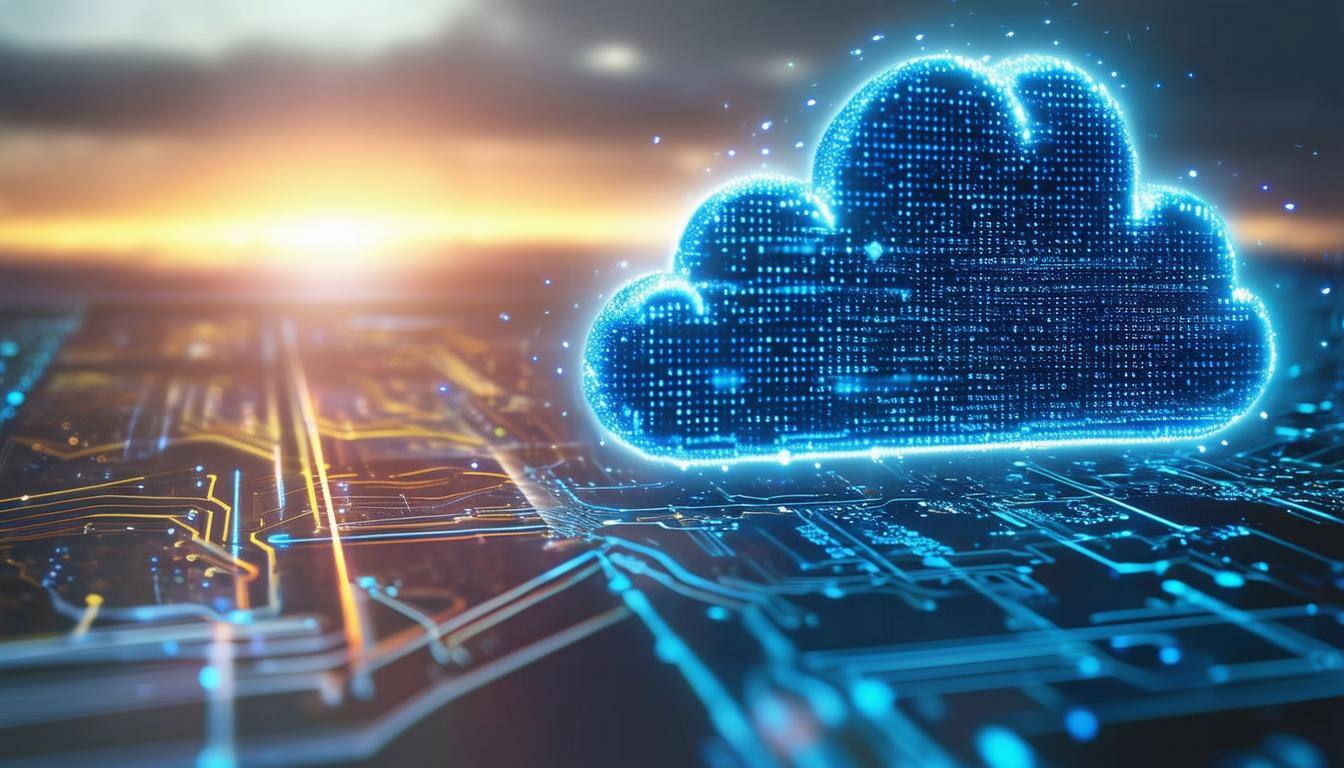And How You Can Get Your Institution There, Securely
It may be hard to believe, but it’s not been 20+ years since the first Smart Board was introduced to the education market. We’re now well into the era where digitally native kids are now college age, and it comes as no surprise that digital devices and the internet are now also deeply ingrained in our higher education institutions. Then there was the COVID pandemic’s lasting impact on learning, further exploding and expanding e-learning and remote and hybrid classroom settings.
And while it's becoming increasingly common for teachers and students alike to use some kind of wearable, connected “smart” device in their personal lives—from a smart thermostat to an Apple Watch tracking their health data—the Internet of Things (IoT) in our colleges and universities is something entirely new.
The Internet of Things refers to the now billions of physical devices that can now be connected to data networks via the internet and made intelligent thanks to embedded sensors and computing abilities so they can communicate real-time data—without human intervention.
IoT devices communicate with themselves, IoT applications, and platforms and enable business outcomes via the intelligence generated through data analytics. An IoT system works via the real-time acquisition and two-way transfer of data. This allows for the real-time analysis and control of the system.
The three main components of an IoT solution, as defined by Gartner, are:
-
The Edge: The Edge is comprised of the physical devices themselves. This is where data is acquired through sampling and collection from the surroundings, by connected devices that contain sensors and/or configurable parts to alter the operation of the device.
-
The IoT Platform: The platform consumes, stores, and analyzes the data. Based on the intelligence learned from the analysis, the platform will invoke tasks or enterprise applications. The platform also consists of device and system manageability. Examples of IoT Platforms include Microsoft Azure IoT, IBM Watson, and Google Cloud IoT.
-
The Enterprise: This represents the set of applications, processes, and services that can be called by the IoT Platform to complete business outcomes.
We’d also add Connectivity to this list as a main component, since crucial to the Internet of Things is the ability of these devices to connect so they can communicate what they sense and where they are located. There are a variety of connectivity or communication channel solutions, including WiFi, Bluetooth, Cellular Networks (4G/5G), NFC (Near Field Communication), and Long-Range Wide Area Networks (LoRaWAN).
What are Some of the Ways IoT can Benefit Higher Ed?
There are several key areas of opportunity around IoT for higher ed—and implementing them in a thoughtful, smart, and secure way can not only deliver real learning and operational benefits, but it can also help set your school up as you compete for students and teaching talent.
The availability and accessibility of the IoT can enable colleges and universities to improve campus safety and security, better manage key resources and facilities, and enhance the learning and teaching environment.
Improve Resource Access and Management
In 2020 and 2021, Canadian colleges and universities were spending just over $1.47M on materials and supplies. And while college students are moving increasingly away from paper notebooks to using tablets and laptops for notetaking in class, IoT devices and a connected campus can help further divert resource expenditure towards reusable materials and reduce the cost of supplies like paper.
For students who can expect to spend up to $1000 CAD on textbooks per year, increasing access to online text materials can make a significant impact. IoT devices can not only help facilitate more affordable learning materials, but they can help enhance the experience as well: connecting online materials to the learning process both in-classroom and out via cloud platforms, allowing students to collaborate with classmates and learn at their own pace, in the style they learn best.
IoT devices can also be employed across campuses to better facilitate resource access. Physical resources can be location-tracked and monitored, and connected to online scheduling and reservation platforms—as can spaces like classrooms, labs, meeting rooms, etc.
Better Manage Facilities and Energy
Facilities and energy management on campuses comes with a lot of variables. By installing IoT sensors or connected devices like light bulbs, outlets, water sources, and thermostats, campuses can enable facilities managers to manage energy, monitor energy consumption, and control usage—resulting in more efficient energy usage and along with it, cost and emissions savings. This can be a real win-win-win for organizations seeking to gain better control of their energy usage and costs, as well as create a more sustainable, climate-conscious campus that’s also more attractive to students with environmental concerns.
Enhance Campus Safety and Security
Campuses are critically concerned with creating safe on-campus environments for students, staff, and faculty. Colleges and universities can use IoT sensors and devices to monitor resources and equipment, as well as students and faculty. This can not only reduce operating costs, but it can also help create safer campus environments: from connected security cameras and door sensors to enabling real-time bus and transportation tracking, IoT can help raise the levels of safety.
Expand the Learning Environment
As we mentioned above, using IoT for instruction and learning can provide a more enhanced, sophisticated, comprehensive, and seamless experience. IoT devices can enable fast access to multimedia like videos and can connect students’ learning experiences in classrooms, at home, in their dorm rooms, the library—wherever they learn and study best. It can also help facilitate better collaboration with their peers.
IoT can also make learning more experiential: for example, in the United States, Southern New Hampshire University has employed it to use 3D holographic models to teach architecture.
This is representative of one of IoT’s biggest potential benefits for higher education: expanded and personalized learning. While traditionally, teachers and professors have gathered information on student learning through devices like tests, classroom discussion, and essays, IoT devices can help collect additional information that can help teachers adapt and personalize learning for varying student needs. For example, students all learn differently—some are visual learners, some learn through audio, and others learn by doing.
Cloud-connected devices can gather data on student engagement and when paired with AI, analyze students' historical data, finding new insights and saving time for professors who can then use this information to help better inform their lessons and raise levels of student engagement and retention, as well as enable equality for diverse students and learners—whether students are attending in-person or remotely (Insider Intelligence).
Where Should a Higher Ed Institution Realistically Aim to Be with IoT in the Next Two (2) Years?
First, we’d emphasize that like with any new technology, it’s important for your organization to evaluate the needs introducing IoT would serve. “Smart” and connected IoT systems will continue to explode, no doubt about it, but implementing new technology also comes with both costs and risks. Start by evaluating your desired outcome and deciding on where you think your institution and/or campus could benefit most.
For example, as we discussed, there’s great potential for expanding experiential and personalized learning experiences for students, as well as for improving campus safety—simply by tracking and gathering more information about students. RFID-enabled campus ID’s can help monitor student locations, health, and facilities use. But all this information gathering must be balanced with student freedom and privacy. Equally, an all-in approach to IoT may turn off some teachers who want to maintain freedom in how they use technology in their classrooms.
It’s also critical that any discussion around implementing IoT starts with security. Every new IoT device added expands the attack surface for your institution. And according to Cisco, 62% of businesses don’t have a full inventory of their IoT/OT assets.
That’s why it’s critical to start by understanding exactly where you are in your IoT journey and where you’d like to get to, by when. This means understanding exactly what IoT devices you already have in-use on your campus and connected to your network—even if you don’t think you have any.
Create an inventory of existing IoT devices and mitigate security risks here first. Next, you can use the understanding of your existing IoT to update and patch your IoT devices and to segment these devices from other networks to prevent lateral movement if a device were to be compromised.
Then integrate a discovery tool set with your organization’s cyber security controls to automatically mitigate threats, before you start adding in new devices and systems. The end goal is to integrate the visibility, monitoring, and altering with your SEIM for incidence response.
Once you’ve identified these, have matched IoT technologies to your institutions’ goals and needs, defined desired outcomes, and are ready to move forward into the next phase of IoT, security should become a part of every step, so you are implementing security by design, at every layer.
Download the Comprehensive Guide to Evaluating Your Business Case for IoT
With the right Technology Ally, you can not only safeguard your operations and customer data but also position yourself to thrive as a result of digital transformation. Download our guide to learn more about evaluating your college or university’s business case for IoT and how to ensure your IoT systems are secure by design.






.png)